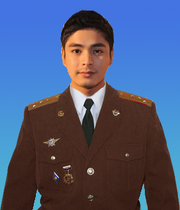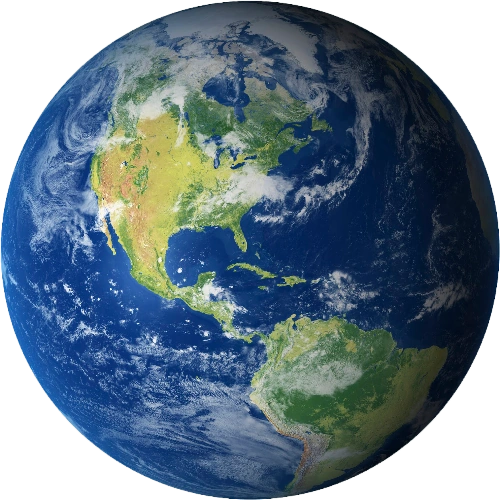The Philippines, officially known as the Republic of the Philippines (Filipino: Republika ng Pilipinas), is a sovereign
To the north of the Philippines across the Luzon Strait lies Taiwan; Vietnam sits west across the South China Sea; southwest is the island of Borneo across the Sulu Sea, and to the south the Celebes Sea separates it from other islands of Indonesia; while to the east it is bounded by the Philippine Sea and the island-nation of Palau. Its location on the Pacific Ring of Fire and close to the equator makes the Philippines prone to earthquakes and typhoons, but also endows it with abundant natural resources and some of the world's greatest biodiversity. At approximately 300,000 square kilometers (115,831 sq mi), the Philippines is the 64th-largest country in the world.n island country in Southeast Asia situated in the western Pacific Ocean. It consists of 7,107 islands that are categorized broadly under three main geographical divisions: Luzon, Visayas, and Mindanao. Its capital city is Manila while its most populous city is Quezon City; both are part of Metro Manila.
With a population of about 100 million people,[11][12] the Philippines is the seventh-most populated country in Asia and the 12th most populated country in the world. An additional 12 million Filipinos live overseas, comprising one of the world's largest diasporas. Multiple ethnicities and cultures are found throughout the islands. In prehistoric times, Negritos were some of the archipelago's earliest inhabitants. They were followed by successive waves of Austronesian peoples.[13] Exchanges with Chinese, Malay, Indian, and Islamic states occurred. Then, various nations were established under the rule of Datus, Rajahs, Sultans or Lakans.
Politics[]
Executive body[]
The president of the Philippines, elected by popular vote to a five-year term, is the head of state and the commander-in-chief of the armed forces. The President also responsible for conducting foreign relations, such as concluding treaties, declaring war and making peace. The President has no right to veto any decisions by the National Assembly. Other powers of the President include granting amnesty, pardon or clemency, declaring martial law, and conferring honors and decorations. He or she designates a prime minister from the majority party in the National Assembly and must accept the cabinet the premier names. However, the premier can be dismissed under extraordinary circumstances.

Portrait of Ret. Col. Rodrigo Santibañez Rivera clad in his political uniform, taken in 2025
Legislature[]
Legislative power is vested in a Congress, a bicameral body consisting of 200 members in the lower house, the House of Representatives, and 24 members in the upper house, the Senate.
Judiciary[]
The highest tribunal is the Supreme Court of the Republic, made up of at least 18 judges elected for life. It nominates judges of lower tribunals, such as the courts of appeal, administrative courts and courts of first instance. After the election of Rivera and the National Action Party, the constitution was revised. Some of the most important elements of the revised charter:
- The executive branch is made up of a president and a prime minister. The president is stripped of administrative powers, and responsibility on state affairs, the legislative branch, passing of laws, the national guard, local government, and other things, given to a prime minister. He is still responsible, however, for passing of laws, foreign affairs, and the military.
- The president is elected by popular vote. The prime minister, however, is still elected on traditonal methods, but adapted to a bicameral legislature. The prime minister is elected from the Senate and elected by the lower house.
- Conversion from unitary to a federal structure; the regions are redrawn on ethnolinguistic boundaries (much like OTL India and Ethiopia). This gives the minority groups a chance to govrn themselves.
- The charter has Socialist principles regarding the economy but basic rights are secured (freedom of speech, right to bear arms etc.).
- Any amount of freedom is fine as long as no principles are disobeyed and there is no threat to the government
- Within the home, parents are more important to their children than is the government, but children should act with the government outside of a house
- The church and state are politically separated that they cannot meddle in each other's internal affairs, but must work synonymously to enhance spiritual and moral discipline, to keep a unified country.
- The above provision does not mean that the word 'church' refers to the Roman Catholic Church alone (i. e. monopolizing religious influence). Other religious groups are welcome to cooperate.
- Corporations are a necessary component of an economy, but they should be monitored so as not to be a threat to the government, and the popular majority
Military[]
The Armed Forces of the Philippines is the military force of the Philippines that is responsible for national security and is composed of three branches: the Philippine Air Force, the Philippine Army, and the Philippine Navy (includes the Marine Corps). Currently, The Armed Forces of the Philippines' manpower is a voluntary force meaning it acquires its personnel from volunteers through recruitment however, according to the Section 4, Article II of the Constitution of the Philippines, conscription may be possible.Civilian security is handled by the Philippine National Police under the Department of the Interior and Local Government (DILG)
However, after the rise of Rivera, the Brown Shirt Brigade, the National Action Party's paramilitary wing, currently standing at 100,000 active personnel, works hand-in-hand with the AFP. Within the Brigade is the Lakandula Recon Corps, an elite formation whose primary purposes were providing protection loyalist rallies and assemblies, disrupting the meetings of opposing parties, and fighting against the paramilitary units of the opposing parties.

Emblem of the Brown Shirt Brigade

Emblem of the Lakandula Recon Corps



